As businesses increasingly integrate external IT service providers with their internal teams, the collaborative model of co-managed IT has become more common. This approach offers significant advantages, including access to specialized expertise and enhanced operational efficiency. By leveraging these benefits, businesses can pave the way for a more seamless and effective IT environment, instilling a sense of optimism and motivation in business leaders and IT managers looking to enhance their IT operations.
What is Co-Managed IT?
Co-managed IT is a partnership between an organization’s in-house IT team and an external managed service provider (MSP). Rather than outsourcing all IT functions, the internal IT department works alongside the MSP, dividing responsibilities based on expertise. This allows businesses to retain control over some tasks while benefiting from the MSP’s specialized skills for more complex or strategic needs.
The Challenge of Role Confusion in Co-Managed IT
One common challenge businesses face when adopting co-managed IT is role confusion. Internal IT teams are often stretched thin, managing everything from network administration to cybersecurity, which can lead to burnout, mistakes, and inefficiencies, especially when there’s a lack of clarity about responsibilities, resulting in overlap. To prevent this, it’s crucial to clearly define the roles and responsibilities of both the internal IT team and the Managed Service Provider (MSP). When each party understands their duties, the risk of duplication or oversight is minimized, fostering confidence and ensuring a smoother, more efficient co-managed IT experience.
- Internal IT Team: This team typically focuses on day-to-day operations, such as user support, server management, and local infrastructure maintenance.
- MSPs specialize in advanced tasks like cybersecurity, cloud migration, disaster recovery planning, and IT strategy development. These are areas that often require specialized skills and knowledge that may not be readily available within an organization’s internal IT team.
By clearly establishing these roles from the start, businesses can ensure that tasks are executed efficiently, with no overlap or gaps in coverage.
Preventing Overlap: Communication and Collaboration
Effective communication is not just important; it’s the lifeline of co-managed IT. It ensures that teams don’t duplicate efforts and coordinate properly, leading to clarity. Both formal and informal communication are key to avoiding overlap and making everyone feel connected and part of a unified team.
Establish Communication Channels
Both formal meetings for strategic planning and informal check-ins for troubleshooting should be prioritized. Regular communication ensures everyone is aligned and aware of each other’s progress, minimizing errors or missed opportunities.
Use Shared Tools and Documentation
Having shared tools and documentation—such as a centralized ticketing system or project management platform—ensures that internal and external teams work from the same page. This reduces confusion and fosters smoother collaboration, providing reassurance to business leaders and IT managers about the efficiency of their co-managed IT setup.
Specialization and Strategy Alignment
Co-managed IT allows businesses to tap into specialized expertise that may need to be added in-house. However, this expertise must be aligned with the organization’s overall IT strategy.
Aligning Day-to-Day Operations with Strategic Goals
It’s crucial to differentiate between routine operational tasks and more significant strategic initiatives. Internal IT teams may handle daily tasks like user support. At the same time, MSPs manage more critical projects like cloud migrations or cybersecurity planning. Both teams must understand how their responsibilities contribute to the organization’s broader IT strategy, ensuring long-term success while retaining control over specialized tasks.
Cybersecurity: A Key Area for Collaboration
While internal teams often handle basic security tasks such as patching and access control, MSPs bring advanced skills like threat detection, vulnerability assessments, and incident response. However, precise coordination between both teams is essential to avoid overlap and ensure comprehensive protection.
Measuring Success: KPIs and Accountability
It is crucial to establish key performance indicators (KPIs) that track both technical and strategic outcomes of the collaboration. Metrics ensure both teams meet their objectives and the business reaps the benefits of the collaboration. KPIs should focus on operational targets like system uptime and incident resolution, as well as strategic goals such as implementing long-term IT initiatives. Regularly reviewing these metrics promotes accountability, helping both teams stay on track and improve performance.
Building a Collaborative Culture
A strong collaborative culture is essential for the success of co-managed IT. Internal and external teams must work together, share knowledge, and align their efforts toward achieving shared goals. This spirit of collaboration fosters better problem-solving, drives innovation, and enhances service delivery, ultimately leading to more effective and efficient IT operations.
Conclusion: Unlocking the Full Potential of Co-Managed IT
Co-managed IT can significantly enhance your organization’s IT capabilities, but its success depends on clearly defining roles between internal and external teams. By prioritizing effective communication, collaboration, and specialization, businesses can minimize overlap and confusion, leading to a more efficient and secure IT environment. The ultimate goal of co-managed IT is to create a complementary partnership where both teams leverage their strengths, and when executed properly, this approach improves outcomes and strengthens the overall IT infrastructure of your organization.








